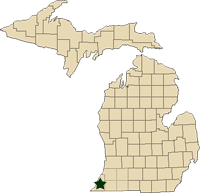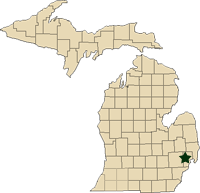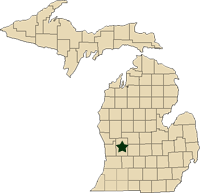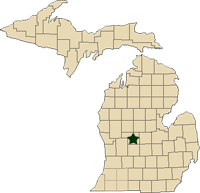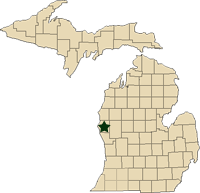Regional reports on Michigan vegetables – September 7, 2011
MSU Extension educators’ pest and vegetable updates for Michigan.
This week’s regional reports:
- Southwest Michigan – Ron Goldy
- East Michigan (Lapeer, Macomb, St. Clair) – Hannah Stevens
- Grand Rapids Area – Bill Steenwyk
- Central Michigan – Fred Springborn
- West Central Michigan – Norm Myers
Southwest Michigan – Ron Goldy, Michigan State University Extension
|
Weather
Temperatures ranged from 63 to 93oF for highs and 41 to 73oF for lows. The area received around 0.10 inches of rain for the week and 0.15 inches for the past two weeks. Some sites are getting quite dry and plants are showing signs of stress. This is especially evident in some corn and soybean fields.
Crop reports
Harvest from many crops is beginning to slow as growers abandon earlier fields and are harvesting only their later planted fields.
Dry weather has allowed aphid populations to increase. This is especially noticeable in watermelon fields as the fruit are sticky with honey dew. Virus incidence has increased invine crops and peppers, probably as a result of increased aphid vectors.
Powdery mildew is evident in many pumpkin plantings and growers should apply at least one more protective fungicide application if plants still have a significant amount of leaves and immature fruit. Immature fruit needs to be protected from direct sun or it will sun burn. Now that leaves are dying down, yield seems low in some fields. This is probably due to time of planting for that field and the increased temperatures during bloom time in July.
East Michigan (Lapeer, Macomb, St. Clair) – Hannah Stevens, Michigan State University Extension
|
Field conditions
Dry soil conditions prevail in the southern part of this region while a cold front accompanied by severe storms brought wind and rain to the more northern counties (and some Detroit suburbs) over the weekend. Cool, fall-like temperatures have averaged in the mid-50s range since Monday (September 5). While it makes for pleasant field work, it is worrisome as growers had such a late start this season and are hoping for an extended fall.
Crop conditions
In sweet corn, European corn borer trap catches remain low, but damage to unprotected fields (such as post-harvest or abandoned) is high. Worms are causing indirect injury to stalks, apparently seeking overwintering sites. Snap bean and pepper growers need to be protecting the fruit.
The storm system this weekend brought in a huge influx of corn earworm (tip worm) to the area with 350 moths in one trap. This is an unprecedented number, at least in the last 15 years. Any varieties other than Bt protected are very vulnerable at this point. Eggs can hatch on the silks and move directly into ears within a few days.
Pumpkins, winter squash and gourds are being shipped along with most other vegetable commodities. Reports of lower than average yields of pumpkins are coming in, but the quality of the fruit and “handles” is excellent. Phytopthora fruit rot has made a thankfully late appearance in melons, but in a dry summer such as this one, it is a disappointment. While tomato yields are high, some late bacterial diseases are also resulting in vine decline, but negligible yield losses.
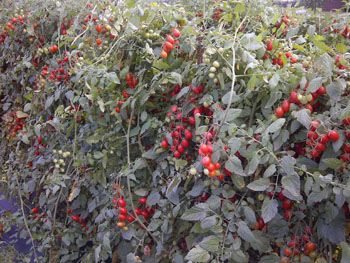
Excellent yield of new grape tomato varieties.
Grand Rapids Area – Bill Steenwyk, Michigan State University Extension
|
West Michigan's weather swung dramatically from hot to very cool over the weekend. Our current highs are in the 60s with lows in the 40s. Rainfall has been two-tenths of an inch or less throughout the region.
Sweet corn is about 80 percent harvested. Yields have been good overall, with an occasional problem from larvae feeding in the ear. It appears that European corn borer and western bean cutworm pressure is modest, with corn earworm larvae causing the most damage. My trap in southern Kent County showed 16 corn earworm moths. (The European corn borer traps were down.)
The zucchini harvest has been good, but is now winding down. Hard squash harvest is about 10 percent complete, with reports being moderate to favorable.
Tomato, pepper and eggplant harvest continues with mostly favorable reports. A field scout found occasional problems with aphids in peppers. Some tomato fields have seen reduced yields from bacterial spot and early blight.
The onion harvest continues. Yields can vary substantially field by field and farm by farm. In some fields, earlier wetness caused diseases in the bulbs. Other fields have been afflicted with foliar diseases, such as purple blotch and anthracnose. A number of growers report large numbers of smaller onions. Still, others are satisfied with a good overall crop. It truly is a mixed bag year for the onion crop.
Celery is about 60 percent harvested. Yield reports are positive overall. Earlier problems with aphids and variegated cutworms have diminished somewhat. Aster leafhopper counts have been low.
Central Michigan – Fred Springborn, Michigan State University Extension
|
Weather
A wide range of temperatures have been observed in central Michigan. Highs ranged from 88.5°F on Thursday, September 1, to 62.5°F on Monday, September 5. Lows have ranged from 69 to 42°F. We have had no reports of frost. Much of the area received 1 inch of rainfall on Friday morning (September 2), replenishing soil moisture.
Crop reports
Potato harvest is well underway with chipping potatoes being shipped as they are harvested. Yields have been variable from 250 to 400 cwt/acre, with most falling in the range of 300 to 320 to 350 cwt/acre. Vines are dead or dying in most fields.
Pickle harvest is winding down with just a few fields left to go. Downey mildew is present throughout central Michigan.
Dry beans are maturing rapidly with approximately 10 percent of the crop harvested in Montcalm. Quality is generally good with variable yields.
Powdery mildew is very evident in many cucurbits, particularly pumpkins and squash.
West Central Michigan – Norm Myers, Michigan State University Extension
|
Oceana County has received over an inch of rain in the last week, but temperatures have taken a much cooler turn. The lows yesterday (September 6) were mostly in the upper 30s. I did hear reports of temperatures as low 33, but didn’t actually hear any reports of frost.
In asparagus, irrigation has stopped in the few fields where it exists to prevent any parasitic late growth and cover crops applied earlier have begun to germinate. The final fungicide sprays will go on the fields this week
Zucchini growers have mostly finished harvest for the season, but the first Jack O’Lantern pumpkins were harvested late last week. More growers will begin harvest in the next few days. Winter squash vines have begun to go down from powdery mildew, but most fruit appears to be mature.
Processing broccoli harvest is in full swing, with yields at least normal.
In carrots, sizing continues to be slow, but hopefully will pick up now that the weather has turned cooler. I did collect an aster leafhopper sample last week and according to MSU Diagnostic Services, aster yellows infectivity continues to be very low. Cooler nights are slowing the accumulation of disease severity values under the Tom-Cast system, but growers will continue to be concerned with foliar diseases for a couple of weeks.
I only caught one European corn borer moth this week. However, my corn earworm catch continues to trend higher with 41 caught in my trap this week. Corn earworm will only be a concern in sweet corn for a week or so, but locally we also have to worry about the late snap bean crop.
I continue to hear concerns about the unavailability of labor, but after the pumpkin crop is in, that concern shifts to fruit crops and Christmas trees.



 Print
Print Email
Email